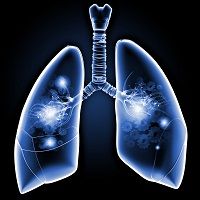Mitochondrial Swelling Contributes to Lung Fibrosis in Older Patients
Age is a risk factor for most pulmonary diseases, and new research indicates mitochondrial swelling in the lung cells may be the culprit.

Explaining why older patients develop lung fibrosis may lie in mitochondrial expressions, according to findings published in The Journals of Clinical Investigation on February 2, 2015.
After observing bloated and misshapen mitochondria in the lungs, a research team from the University of Pittsburgh School of Medicine was interested in conducting a study to pinpoint the pathogenic mechanisms that underlie the effects of advancing age on idiopathic pulmonary fibrosis (IPF). Patients older than 75 years have 50 times the higher prevalence of IPF than people aged 35 years or younger, the researchers commented.
“Other chronic and progressive diseases we see with aging, such as Parkinson’s disease, have been recently associated with mitochondrial abnormalities, so we wondered if that was occurring in IPF,” the study’s senior investigator Ana L. Mora, MD explained in a press release. “It was a simple question, but it hadn’t been asked before, so we examined lung cells from patients with advanced IPF and healthy people. We were so surprised to see dramatic differences in the number, shape and function of the mitochondria.”
The research team examined the levels of a lung enzyme called PTEN-induced putative kinase 1 (PINK1) which plays an important role in mitochondrial function and morphology. The impaired mitochondria were associated with a reduction in PINK1 expression, and mice lacking PINK1 had dysfunctional and misshapen mitochondria in lung cells. The mice models were especially susceptible to developing lung fibrosis.
“We found also that low PINK1 is associated with increasing age and cellular stress,” Mora continued. “This might help explain why older people are at greater risk for developing IPF, and it could mean developing drugs that can boost PINK1 levels or improve mitochondrial function will help treat IPF.”
Low levels of PTEN are commonly found in fibroblasts and epithelial cells from IPF patients. The mice in the study with PTEN deficiencies developed spontaneous fibrosis by intrinsic defects in fibroblasts and negative regulation of their proliferative response.
Current literature supports the results of this study, in that some studies have found deficiencies of PINK1 have been linked to increased mitochondrial injury and decreased ability to recruit parkin to depolarized mitochondria — which both initiate mitophagy, the researchers explained. Other studies have discovered structural and functional communications between the mitochondria and the endoplasmic reticulum stress. The stress may contribute to added presence of proteins around the mitochondria, which can be the catalyst of the swelling.
“These data suggest that therapeutic pathways based on induction of PINK1 and/ or improvement of mitochondrial function, dynamics, and turnover might be useful in the treatment of fibrotic lung diseases,” the authors concluded.